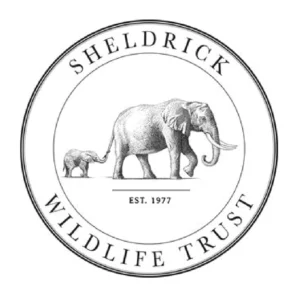The grey crowned crane
, (Balearica regulorum) has a range which stretches from the eastern Democratic Republic of Congo, through Uganda and Kenya to southeastern South Africa. Grey Crowned Cranes are non-migratory but undertake variable local and seasonal movements and are most abundant in Uganda, Kenya and Tanzania.
“A spectacular, mostly blue-gray crane with a black-and-white face and a crown of golden-yellow plumes. Immatures are rustier than adults. Singles, pairs, and flocks prefer wetlands, flooded grasslands, and man-made water bodies, but they can range widely through other open habitats when foraging. Resident but may be locally nomadic in response to rain. Groups can often be detected by their low plaintive bugling “maaah-hem” call. The similar Black Crowned-Crane differs in having slaty-gray coloration, smaller red facial wattles, and red-and-white (rather than white) cheek patches.”
– E-bird
Grey Crowned Cranes of Naivasha
The Naivasha wetland represents an area where wetland climatic conditions converge to create an ideal habitat for wading birds such as ibises and grey crowned cranes. The grey crowned crane’s conservation status has recently been upgraded to endangered, and there are only only 25,000 to 30,000 remaining and are on the decline in Kenya.
About the painting:
The inspiration for this painting came from encountering the pair of resident, quite tame crowned cranes who live on the grounds of the Kenya Bird of Prey Trust. I couldn’t get a perfect photo however so I used a fabulous photo taken by Shawn Olesen as my primary reference.
I started this project on my laptop, by compositing the crane against a “golden ratio” flat panel of blue, with a separated lower strip to represent a horizon line, then sketched in a detailed outline using my pressure sensitive Intuos graphics tablet. Once I had outlines that I liked I printed them out and taped them down to my large format lightbox. I use the lightbox rather than graphite transfer paper or pencil drawings to leave the watercolor paper free of any outlines.
I then taped over a 30” x 22” piece Arches Rough 100% cotton watercolor paper (which I had to buy while visiting my daughter in Atlanta, as there is no Arches in Kenya!).
I used Van Gogh and Winsor & Newton paints, applying broad background washes first, then laid in the base body and head textures using a combination of wet on wet, dry brush and wet on dry washes. I used small amounts of sea salt to form the texture patterns of the cap and wattles, and deliberate “bloom” backwash effects in the background.
Make a statement in any room with this framed poster, printed on thick matte paper. The matte black frame that’s made from wood from renewable forests adds an extra touch of class.
• Ayous wood .75″ (1.9 cm) thick frame from renewable forests
• Paper thickness: 10.3 mil (0.26 mm)
• Paper weight: 189 g/m²
• Lightweight
• Acrylite front protector
• Hanging hardware included
• Blank product components in the US sourced from Japan and the US
• Blank product components in the EU sourced from Japan and Latvia
How to attach hooks on 24″ × 36″ horizontal frames:
Place each of the mounting hooks 1 inch (2.5 cm) from frame corners when hanging horizontally.
This product is made especially for you as soon as you place an order, which is why it takes us a bit longer to deliver it to you. Making products on demand instead of in bulk helps reduce overproduction, so thank you for making thoughtful purchasing decisions!
Age restrictions: For adults
EU Warranty: 2 years
In compliance with the General Product Safety Regulation (GPSR), Oak inc. and SINDEN VENTURES LIMITED ensure that all consumer products offered are safe and meet EU standards. For any product safety related inquiries or concerns, please contact our EU representative at gpsr@sindenventures.com. You can also write to us at 123 Main Street, Anytown, Country or Markou Evgenikou 11, Mesa Geitonia, 4002, Limassol, Cyprus.


Reviews
There are no reviews yet.